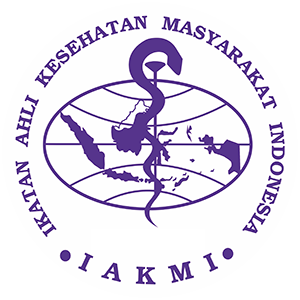The Effect Of Eye Exercises Intervention As Myopia Booming Prevention Effort In Children During Online Learning In The Covid-19 Pandemic
DOI:
https://doi.org/10.30787/gaster.v20i1.738Keywords:
Eye exercises, myopia, covid-19.Abstract
Background: During the Covid-19 pandemic, all levels of education must use online learning. Therefore, childrens use gadgets and computers more for a long time, which is made myopia causes in children. The prevalence in Indonesia shows that 10% of 66 million school children (5-19 years old) suffer from refractive errors, namely myopia. While the prevalence of myopia in children Asia is more than 5%, and children in Asia have a higher prevalence in myopia cases of about 29%. Objective: To determine the effect of eye exercises on reducing myopia booming in children during online learning in the COVID-19 pandemic. Methods: This study used a quasi-experimental design with one group pre-test and post-test design. The sample in this study were 15 respondents. The instrument used is the Snellen chart. Results: The results of the paired t statictic test showed that the data before and after the eye exercises intervention showed that in the right eye the p value was 0.035 (α<0.05), while for the left eye the p value was 0.031 (α<0.05). Conclusion: This study concludes that there is an effect of giving eye exercises intervention on reducing myopia outcomes in children.ÂReferences
Agustino,L. 2020. Analisis Kebijakan Penanganan Wabah Covid-19 : Pengalaman Indonesia Analysis Of Covid-19 Outbreak Handling Policy : The Experience Of Indonesia. Jurnal Borneo Administrator, 16(2), 253–270.
Ahidin, U. dkk. 2020. Covid 19 dan Work from Home. Desanta Muliavisitama.
Arisandi, I. P. 2018. Efektivitas Senam Mata Terhadap Computer Vision Syndrome (CVS). JOM FKp, Vol. 5 No. 2 (Juli-Desember).
Atsani, K. L. G. M. Z. 2020. Transformasi media pembelajaran pada masa Pandemi COVID-19. Al-Hikmah: Jurnal Studi Islam, 1(1), 82-93.
Bansal, Yashi dan Moudgil, Tania. 2014. Computer Vision Syndrome. International Journal of Inovative Research and Development,3(11), 276-279.
Desai, R., Palekar, T., Patel, D., Rathi, M., Joshi, R., & Shah, A. 2020. Effects of yogic eye exercises for myopia among students. Journal of Dental Research and Review, 7(5), 69.
Gosewade, N., Drugkar, A. dan Shende, Vinod. 2016. Effect of Pranayama and Eye exercises on Visual Acuity of Medical Students : A Case Control Study. International Journal of Contemporary Medical Research, 3(4), 1133-1136.
He.M, et al. 2015. Refraktive Error and Visual impairment in urban children in southern China. Invest Ofthalmol Vis Sci. 2004 ;45:793-9
Jyoti, et al. 2015. Computer Vision Syndrome (CVS)- Prevention and Management. Journal of Int J Ayu Pharm Chem, 2(2), 31-39.
Kang, M. T., Li, S. M., Peng, X., Li, L., Ran, A., Meng, B., ... & Wang, N. 2016. Chinese eye exercises and myopia development in school age children: a nested case-control study. Scientific reports, 6(1), 1-8.
Kurmasela, et al. 2013. Hubungan waktu penggunaan laptop dengan keluhan Penglihatan Pada Mahasiswa Fakultas Kedokteran Universitas Sam Ratulangi. Jurnal e-Biomed 1(1):291-299.
Lenawati H, dan Rudi E. 2017. Hubungan Perilaku Belajar dengan Kejadian Myopia (Rabun Jauh). Jurnal AKP No. 6.
Lubis, R. R., & Zubaidah, T. S. H. 2020. The relationship between the incidence of Myopia with the use of gadgets in students of Bersama Private Middle School Berastagi.
Misno, D. 2020. Covid-19 (wabah, fitnah, dan hikmah). Amma Alamih.
Musiana, M., Nurhayati, N., Sunarsih, S., 2019. Faktor Risiko yang Berhubungan dengan Kejadian Myopia pada Anak Usia Sekolah. Jurnal Ilmu Keperawatan Sai Betik.
Pandey, R., Bihari, R., & Pandey, A. 2017. Effect of Eye Exercise on Myopia in Children Aged Between 10-15 Years-A Randomized Clinical Trial. International Journal for Advance Research and Development, 2(1).
Sharmila F, et al. 2014. Genetic Analysis of Axial Length Genes in High Grade Myopia from Indian Population. Journal Meta Gene. Vol. 1 (1) : 165,166,168,170.
Sherwood L. 2013. Human Physiology From Cells to System, Eight Edition. USA: Brooks/Cole Cengage Learning.
Wea, M. H., Batubara, S. O. and Yudowaluyo, A. 2018. Hubungan Tingkat Penggunaan Smartphone dengan Kejadian Miopia pada Mahasiswa Keperawatan Angkatan VII STIKES Citra Husada. CHMK Applied Scientific Journal, 1(1), pp. 11–17.
Zorena, K., Gładysiak, A., & Ślęzak, D. 2018. Early intervention and nonpharmacological therapy of myopia in young adults. Journal of ophthalmology, 2018.













